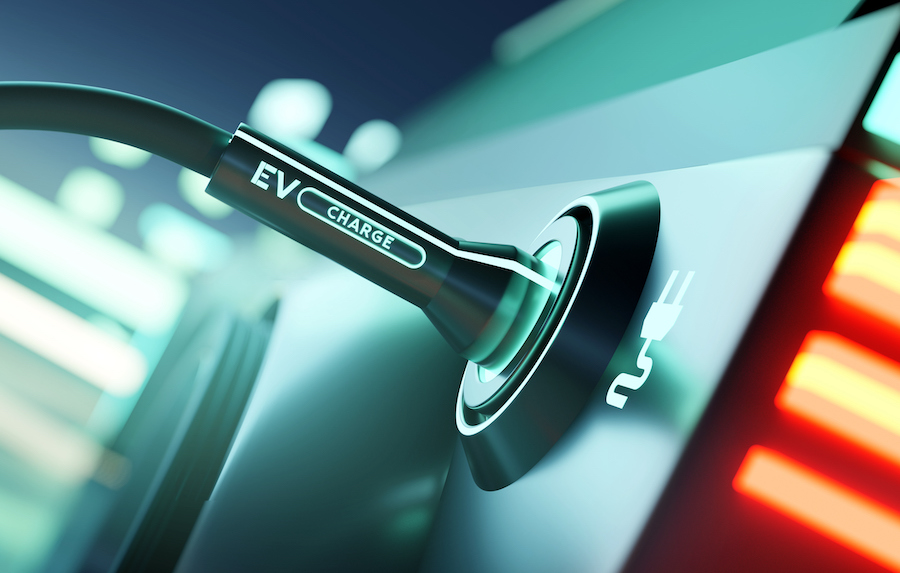Sep 08, 2022 by Mark Dingley
Australia has long been nicknamed “the lucky country”. Much of our more recent success has been built on the country's vast mineral wealth – a mining boom that lasted more than a decade.
Now, some are arguing that critical mineral wealth is again making Australia a lucky country.
It all comes down to the growing demand for renewable energy.
Renewable energy technologies need critical minerals. To make a modern wind turbine, you need 8.5 tonnes of critical minerals – such as copper, zinc and nickel. For solar panels, you need high-purity quartz. Electric vehicles demand vanadium, manganese, graphite, cobalt and lithium.
In fact, just one electric vehicle (EV) needs about 200kg of these critical minerals. That's six times more than a petrol-powered car.
Consider this: the global EV fleet size is expected to grow by 30% a year by 2050.

So as the demand for renewable energy accelerates, so too does the global demand for critical minerals. Analysis by the International Monetary Fund revealed that there will be a sixfold increase in demand for critical minerals worth $US12.9 trillion (AUD$17.6 trillion) over the next two decades as countries race to hit net zero emissions.
Australia has the world’s largest supply of four critical minerals: nickel, rutile, tantalum and zircon. We’re also in the top five for cobalt, lithium, copper, antimony, niobium and vanadium.
Many of these minerals can also be produced as a side benefit of mining copper, aluminium-containing bauxite, zinc and iron ores.
Talk about lucky…
According to Sustainable Minerals Institute deputy director Rick Valenta, the value of all the rare earths produced per year is around $4 billion, with Australia's share being a sizable 10%.
Now, consider that by the time you've produced magnets that go into electric cars, that market is $400 billion.
So, what’s Australia's share of that market?
Zero.

From making batteries to manufacturing the electric vehicles, the further you move up the value chain, the bigger the market potential.
So for Australia to truly benefit from the critical minerals boom, we need to look beyond the “luck” of having the minerals in the ground beneath us. It’s time to start innovating.
Mining companies such as Cobalt Blue Holdings have said they would prefer to supply their critical minerals to domestic manufacturing, but it simply doesn’t exist in Australia in a significant way.
Instead, Australia’s model is to dig up the minerals and ship them out.
Much of the refining process usually takes place in China. Some experts have warned that being too reliant on China for critical mineral refinement and production creates geopolitical risks.
But by refining minerals and adding more value, Australia could benefit from the opportunities presented by renewable energy.
In other words, we need vertical integration.

Vertical integration is a strategy that allows a company to take direct ownership of various stages of its production process, from the extraction of raw materials to manufacturing, rather than relying on external contractors or suppliers.
The concept of vertical integration has been around since the Industrial Revolution. One of the captains of industry of 19th century America, Andrew Carnegie, was one of the first to employ it. His company, Carnegie Steel, controlled the iron mines that were used for mining steel resources, coal mines that provided the fuel to create the steel, railroads for transporting materials, and the steel mills themselves.
More recently, Apple uses vertical integration by owning not only the software and design, but also manufacturing almost every part of its devices which ends up in consumers’ hands – including the packaging.
Some companies are already doing this in the minerals space too. Lithium Australia is one example. Its two vertically integrated business divisions include safe, efficient recovery of critical minerals from end-of-life batteries, and the use of those primary-battery chemicals in producing advanced cathode materials – specifically, lithium ferro phosphate (LFP) and lithium manganese ferro phosphate (LFMP) for lithium-ion batteries.
As Lithium Australia states on its website, it has “vertically integrated lithium extraction and processing, along with battery materials manufacture and spent-battery recycling, in its quest for an ethical and sustainable circular battery economy and, ultimately, a net-zero world”.
According to Accenture, expanding further along battery mineral value chains could support 34,700 jobs by 2030.
However, if we are going to take advantage of this potential mining and manufacturing boom in critical minerals, Australia needs to invest more in R&D, innovation, and its people.
This started in 2022 with the Federal Government’s new strategy for the sector. The plan is to grow the sector through boosting onshore processing, which will create high-wage, high-skill jobs while also offering our trading partners secure supplies of the sought-after critical minerals.
The goal?
To make Australia a “major powerhouse of the world in critical minerals by 2030”.
As part of this, the government has committed to building a pipeline of quality critical minerals projects. The first round of Modern Manufacturing Initiative (MMI) funding under the Collaboration stream saw four critical minerals projects receive grants totalling $243.6 million. One recipient was Pure Battery Technologies Pty Ltd, which received $119.6 million to develop a nickel and cobalt battery material refinery in Western Australia.
Australia’s national science agency, the CSIRO has also developed a Critical Energy Minerals Roadmap to unlock the economic potential of Australia’s critical minerals by demonstrating breakthrough technologies and identifying ways to connect our mining, manufacturing and energy sectors.
.jpg)
However, when it comes to tapping into our critical minerals supply, there are some trade-offs – especially for the environment.
In Tasmania, a mine that's been leaking contaminated water for the past five years wants permission to expand into a wilderness area to extract the lead, zinc and copper for solar panels, electric cars and wind turbines.
Also in Tasmania, King Island – famed for its delicious cheeses and rugged beauty – will soon be home to one of the world's largest tungsten mines.
And outside Darwin, an open-cut mine that will produce lithium vital for electric car batteries is already impacting local waterways.
As Allison Britt, director of mineral resources at government agency Geoscience Australia, said, “It's absolutely ironic. But to save the planet, we are going to need more mines.”
When it comes to our critical mineral supply, manufacturing a value-added product instead of just exporting the raw commodity makes sense. But more than that, it can underpin the whole economy by helping to provide access to renewable energy sources and reduce our reliance on fossil fuels.
Demand is high, the strategy is in place, the capital is there to support it – what are we waiting for?